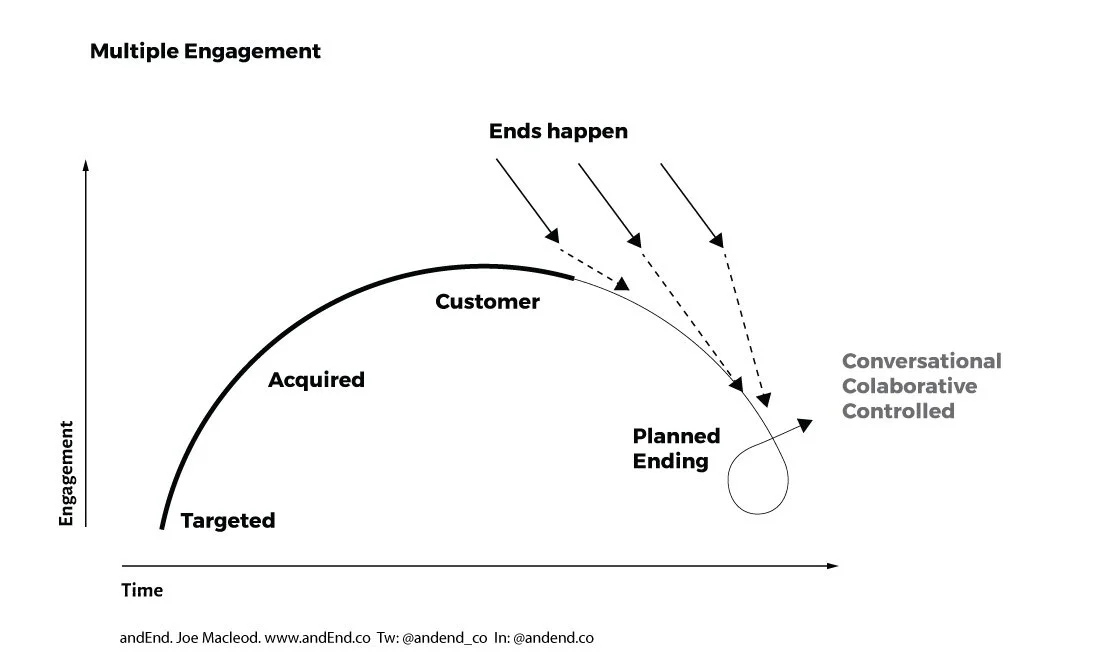Multiple engagement and an ending strategy
The best of future businesses will look at the ending as part of a longer strategy. This would be one that considers a customer’s situation across multiple engagements. These may be scattered over years, maybe even decades. In such a case a business needs to consider itself a multiple engagement provider. It would take the off-boarding as seriously as the on-boarding.
Much of current marketing can be broken into short term and long-term plans. A short-term plan considers tactical issues, matters such as engagement on differing channels, price changes or promotional activities. Long term plans might consider economic, consumer, and market trends.
At off-boarding emotional messages would be sent that engaged the consumer right up to departure and build in long-term meaning and brand equity for the business. This will help encourage collaborative efforts around sustainability, reclaiming assets in a controlled way and establishing a responsible partnership in the long term.
Creating a memory
The second area that shows an enormous potential opportunity is the creation of long-term memory in the consumer experience. By the end of the consumer relationship, a lot of the original meaningful communication has been lost. The consumer often experiences the off-boarding of a product independently from the provider. Their personal perception is rich and meaningful, even if it is not satisfactory or enjoyable. This ending has a significant impact on memory.
Peak End rule is the process of creating memories from two points. Described by Daniel Kaheman, it suggests there are two moments of influence that create memories - the peak and the end. For a business it ideally means having a really good product experience within the consumer lifecycle and being present at the end to embed the best memories. But this is, of course, impossible if the business has already left the consumer experience behind. This leaves the end out of control. In essence, the business loses fifty percent of memory to chance. This is an enormous risk.
Businesses spend a great deal of money building brand equity through advertising and marketing. Not all of this money ends up with customers, or even potential customers. Yet it has been spent. Imagine having a significant influence on people who are already your customers and will carry personal endorsements to other people after they leave – they are the most trusted type of customer. Now think how much equity is lost failing to create good memories at the end of the lifecycle.

